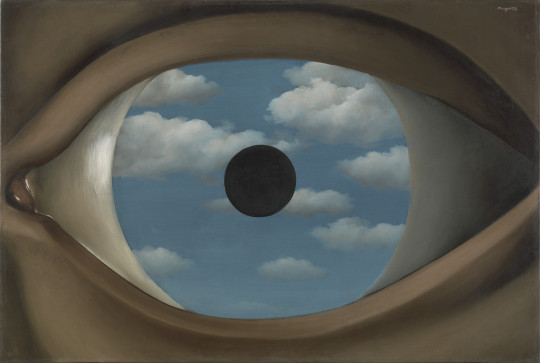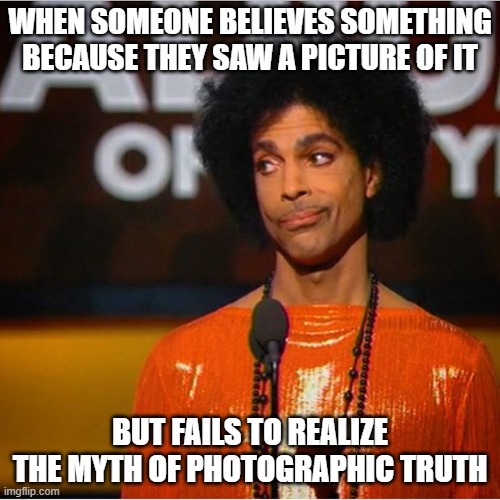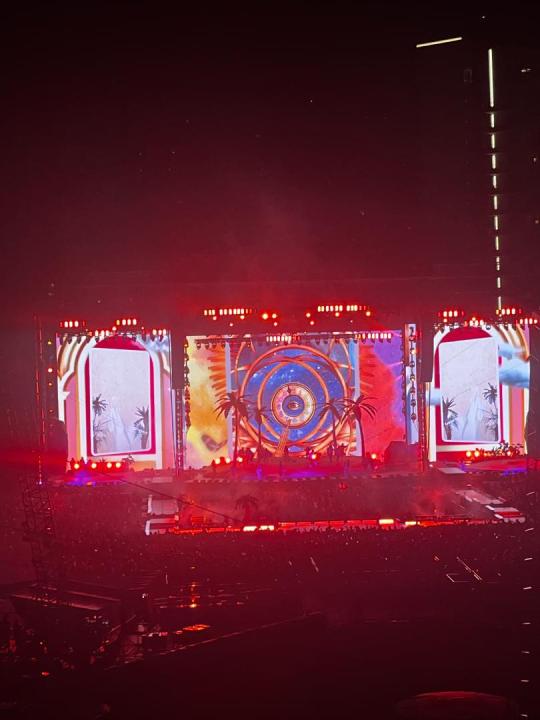Text
For this rumination, in honor of this final week of class, I just wanted to jot down some thoughts I had about this whole semester and especially COMM2033, as it was the only in-person class I had this semester.
Currently, as I sit here writing this, I am quarantining in my room as I finish fighting off a case of the 'rona that I should be almost over. However, sitting here these last few days and realizing I am missing out on the final two in-person sessions of the year made me appreciate just how much I enjoyed going to COMM2033 and interacting with Dr. Pruden, CJ, and my classmates. This was my first class in the communications field after taking a bunch of marketing classes for my AAS degree, and it was a breath of fresh air. Thanks Dr. Pruden for being a fun teacher and showcasing visual communications in a way I had not seen. I also appreciate this final project AKA Zine because it is a lot of fun and makes me feel like I am in a digital design class.
Relating the theories used in this class to my two online classes, I think that visual communication plays a big part in a learning setting, and digital classes can never compare to meeting in person. No matter how fun a subject is, taking it as an online class diminishes the effect a teacher has as that face-to-face interaction is vital. Even the most unlively subject can be brought to life by a teacher, through their body language, personality, and their presentation in class.
I don't know who will be reading this but quick shoutouts to Dr. Pruden, CJ, Tynil, Vivien, Isabel, Justin, and Jett for the great interactions this semester, good luck and hope to see you all in the future!

Magritte, R, 1929, The False Mirror, Museum of Modern Art, https://www.moma.org/collection/works/78938
0 notes
Text
The bulk of this weeks discussion was on postmodernism, and you know something? Going into this class I had a pretty neutral, maybe even almost likeable view of "postmodern", but as I studied postmodernism for my initial zine topic, and really dove into the subject, I have to say I find there to be some issues in postmodernism.
I really had no interaction with postmodernism except for when viewing postmodern art. I mean… I like Andy Warhol and Salvador Dali. However in a literary and ideological sense, I find postmodernism to be an extreme mindset at worst, and a vague critique at best. Specifically, the idea that there are no universal truths is one I do not stand by. I studied postmodern theology for my initial topic in my zine, and found that the idea of postmodern theology and saying there are no truths was seemingly contradictory to all I believe in my faith and opted not to purse that topic further. Regarding postmodern critique and the binary opposition, I agree that not all things are black and white. The example used in class of Batman and Joker being representations or embodiments of "good" and "evil", though both have done the opposite of those things, was good, however a similar example that came to my mind was Iron Man and Thanos. This was mainly because I didn't remember The Joker ever having any redeeming aspects (in the films anyways) and just being pure chaos. Atleast Thanos was empathetic and wanted to do good in his mind, though the unimaginable, horrible idea of wiping out half the universe was the wrong way to go about it.
The rest of the chapter did shift closer to postmodern art though and focused on ideas such as irony, parody, and pastiche. Though these techniques blossomed with the postmodern movement, I think it is best to include them in their own categories these days.

Salvador Dali, 𝘛𝘩𝘦 𝘛𝘦𝘮𝘱𝘵𝘢𝘵𝘪𝘰𝘯 𝘰𝘧 𝘚𝘢𝘪𝘯𝘵 𝘈𝘯𝘵𝘩𝘰𝘯𝘺, 1946, dalipaintings, https://www.dalipaintings.com/temptation-of-saint-anthony.jsp
0 notes
Text
First edit since I made meme videos on Kinemaster way back in middle and high school lol. Upgraded to Adobe Premier Pro though now
0 notes
Text
The main subject of this weeks readings was on The Naturalistic Enthymeme. My main takeaway from this weeks reading is that I am glad to have finally found out where the "cow-skull-sitting-by-itself-in-the-desert-somehow" trope came from. But in all seriousness, it was actually quite an interesting story that I will do my best so sum up here.
Arthur Rothstein was photographing for the Resettlement Administration section of Roosevelts New Deal in the badlands of South Dakota when he came across a cow skull that had been cracked and bleached. Months later, a republican news outlet took that photograph and published it on papers telling people it was fake and created to make the drought that was ongoing in the area seem worse than it actually was. This controversy ultimately put into question the legitimacy of government photographers.
The subject of The Naturalistic Enthymeme gives me deja-vu to past subjects, specifically the myth of photographic truth and the myth of photographic realism. Finnegan, the author of this weeks reading, said, quote, "We assume photographs to be 'true' or 'real' until we are given a reason to doubt them." end quote. Again, our reading is basically telling us "You can't always believe what you see." The only difference is, The Natural Enthymeme says the hearer supplies an argument drawn from premises that do not need to be stated, and insert their own knowledge and experience onto the image.
I like the idea of The Naturalistic Enthymeme more than previous topics however, as it sparks more of a debate internally and externally. The subject of the myth of photographic truth and realism seems more black and white, either a photograph is candid or altered, whereas The Naturalistic Enthymeme asks one to focus on the context and "the bigger picture".

Dan Povenmire and Jeff Marsh, 2012, 𝘚𝘤𝘳𝘦𝘦𝘯𝘴𝘩𝘰𝘵 𝘍𝘳𝘰𝘮 𝘗𝘩𝘪𝘯𝘦𝘢𝘴 𝘢𝘯𝘥 𝘍𝘦𝘳𝘣, https://i.pinimg.com/736x/fd/4f/57/fd4f575358fb5d0119ab30505ff65dbe.jpg
0 notes
Text
I have been thoroughly enjoying the textbook and class in recent weeks because we are getting more into the field of art. Discussing impressionism, cubism, and surrealism is captivating, seeing things like The Cestello Annunciation and learning that it was one of the first, great examples of perspective and showcasing the horizon is quite interesting to find out, and getting hands on experience with creative forced perspective pictures in class is always a plus! Going back through the slides, I noticed the questions on the end and one of them I thought would be fun to answer here in this rumination.
"Do we expect game spaces to be ‘realistic’ in any of the
ways previously described?"
Obviously the answer to the question differs from person-to-person, but I personally would answer no. I enjoy a variety of games, and while most of the games I enjoy, as well as most games created today, are realistic in ways described in the text/slides, you must think of the early video games created and how they lacked the capacity to create these realistic landscapes. Nonetheless, the impact these simple games have still stand today. Take for example, Pong. Pong was arguably the first big success in the video game industry, and is one of the most influential games of all time. Pong is essentially a very simple, digital, table-tennis. If you have ever played Pong or looked at a screenshot of Pong, you would know it features no perspective, and lacks "creativity" and "beauty", just a black screen with some white lines and a pellet. Nonetheless, it is a fun game, and that is what I think is the most important question when playing any game (or if you're like me, just constantly pondering throughout the day).
"Am I having fun?"
"Am I enjoying this?"

Allan Alcorn, 1972, 𝘚𝘤𝘳𝘦𝘦𝘯𝘴𝘩𝘰𝘵 𝘧𝘳𝘰𝘮 𝘗𝘰𝘯𝘨, Lifewire, https://www.lifewire.com/pong-the-first-video-game-megahit-729739
0 notes
Text
The readings for this week really focused on two "icons", yet they differ greatly in their iconism. In Edwards Cover to Cover, we read the story of Afghan Girl. "Afghan Girl" refers to both the cover of the June 1985 issue of National Geographic depicting an Afghanistan refugee, and the girl-depicted herself (though her real name is Sharbat Gula). In this article, Edwards refers to Afghan Girl as a virtual icon. The other reading for this week focuses on Cindy Sherman's Untitled Film Stills. This campaign by Cindy Sherman showcased her acting out female roles from Hollywood and European films, sort of masquerading and parodying the portrayals of women in these films.
Though these readings differ greatly, I found the reception to both brought these two together.
"The Gaze".
We discussed the gaze previously in class, however I came back to that idea during these readings. This brief discussion of the reception the subject of both readings garnered will be focusing on the male gaze. In many of the photographs taken by Cindy Sherman, she is depicted in the third person as an object of beauty and in some, invoking some eroticism. Whether Cindy Sherman was parodying or not, these images faced backlash from feminist activists, who claimed she was appealing to the male gaze. The picture of Afghan Girl I feel appealed to the male gaze in a much more real and demeaning way, as the photographer specifically had the girl unmask to show her face and beauty, despite this being against her religion. The worst part is that the magazine cover emphasizes her eyes, though her eyes would have been visible with the face cover on. One can only assume that he had her unmask herself to appeal to the male gaze.
That was what really struck out to me this week during the readings, and also was my connection for the P2P. I don't want spend this rumination rewriting what I already discussed in the P2P, but my biggest problem in both readings is that audiences, and this applies to both male and female, simply look at what they see physically but fail to feel or look deeper into what the author/photographer is trying to portray. The difference in this case is curious however, as in the case of Cindy Sherman's work, she chose to represent herself in any way she wanted. In the case of the Afghan Girl, Sharbat Gula was the subject of another person taking the picture, and later expressed her discomfort in her portrayal. In either case, audiences have found ways to unjustly condemn both women, which all stems back to the patriarchal bias that the male gaze reinforces.

Cindy Sherman, 2003, Google Arts & Culture, https://artsandculture.google.com/asset/untitled-414-cindy-sherman/sgFPV7yFYqTxow?hl=en
I chose this picture as I was drawn to her work over this weeks readings and wanted to see her more recent projects. I love this picture as I feel as though she is almost calling out her audience who condemn her or see her as merely an object of the male gaze, essentially mirroring them and calling them clowns.
0 notes
Text
This meme is directly inspired by one of my favorite discussions in chapter 1. On page 24 the topic is the myth of photographic truth, which the author shares the meaning and history of. Images are meant to encapsulate reality, however they can only recreate reality in the 2nd dimension, which provides limitations and opportunities for distortion. One of the first instances of faking an image, to my surprise, actually occurred in an 1865 photographic sketchbook of the Civil War. This meme is meant to represent anyone with enough common-sense to know that photographs, especially those shared in the media, can be altered via the photo being staged or photoshopped and are often taken out of context. Why I chose this exact image in particular, I don't know. I used imgflip's meme generator and looked up side-eye and just like the Prince's expression the most.

0 notes
Text
The following pictures represent two aspects of my life that I feel can help people get to know me best. Picture #1 was taken at a Bad Bunny concert I most recently attended, but represents my love for music as a whole. I listen to essentially any and every genre, and within the past year I have grown to love attending concerts and getting to experience the artists and community of people that love the music in-person. Picture #2 is a snapshot I took while skateboarding. I like to longboard, which is slightly different and focuses more on cruising vs skate tricks. It's a great way to ease my mind and get out and experience "the great outdoors". I also enjoy Pokemon (video game, card game, literally all aspects...), hence the Pikachu on the board.


1 note
·
View note